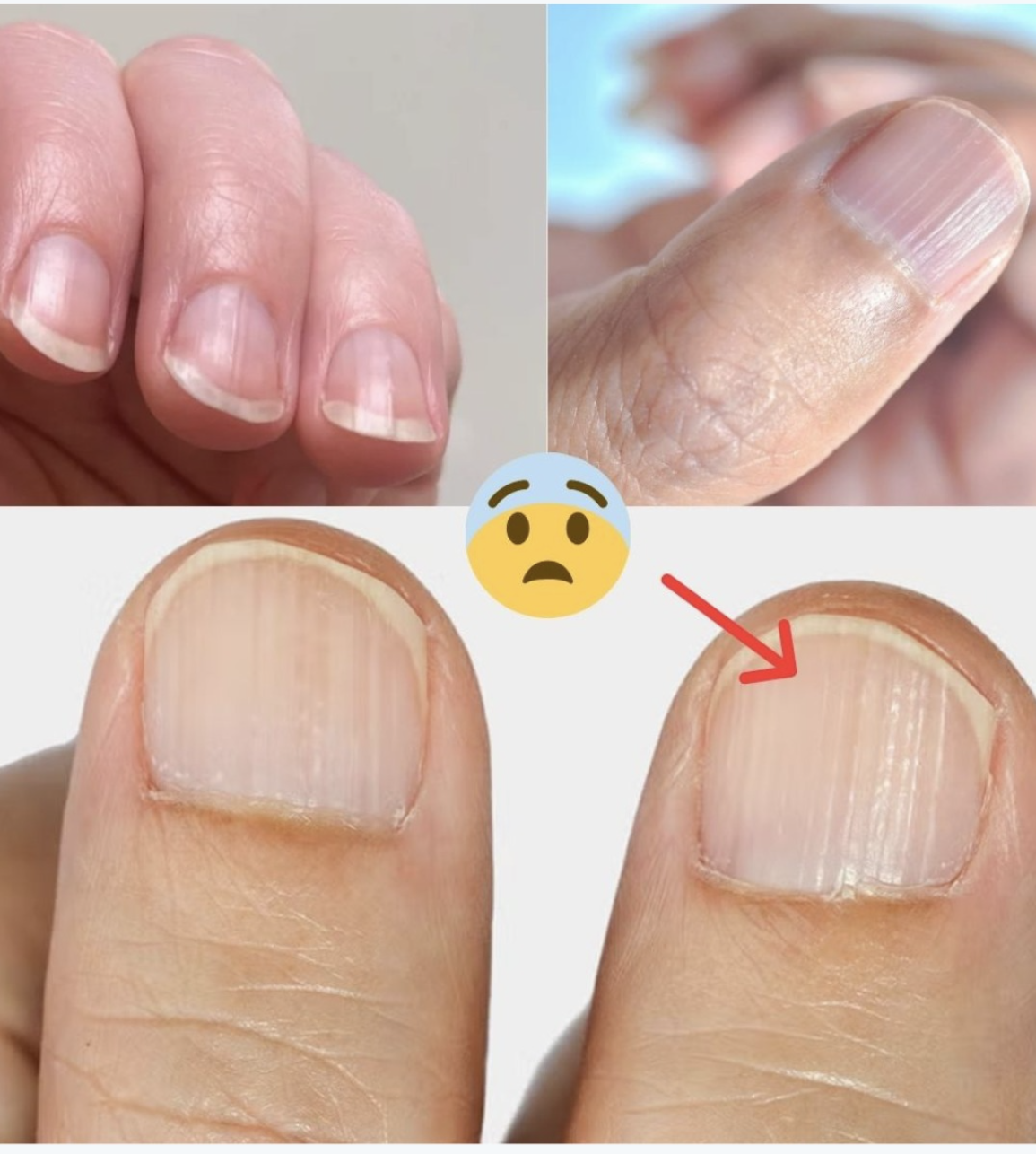Severe infection (like pneumonia or high fever illnesses)
Major surgery
Chemotherapy or chronic illness
Nutritional deficiency
Autoimmune conditions
Recent studies have shown an increase in Beau’s lines following COVID-19 infections , likely due to the body’s systemic stress during illness.
“It’s like a scar in slow motion,” says Dr. Bhavini Shah, a medical advisor at LloydsPharmacy Online Doctor.
“The nail stops growing for a while — and when it starts again, the line marks the moment of disruption.”
✅ What to Do: If these lines appear suddenly or repeatedly, consider recent physical stressors — and consult your doctor if symptoms persist or worsen.
💓 2. Nail Clubbing: A Possible Indicator of Heart or Lung Disease
Clubbing refers to thickening of the soft tissue under the nails , causing them to curve downward and the fingertips to swell.
It often develops gradually and is associated with:
Chronic lung diseases (COPD, cystic fibrosis, lung cancer)
Congenital heart defects
Inflammatory bowel disease
Liver cirrhosis
This condition occurs due to low oxygen levels in the blood , which leads to increased blood flow and tissue changes in the fingertips.
✅ Important: While some people naturally have clubbed nails, sudden changes should always be investigated.
If you notice this change alongside shortness of breath, fatigue, or chest discomfort , speak with your doctor about cardiovascular or respiratory function tests .
🩸 3. Spoon-Shaped Nails (Koilonychia): A Clue to Iron Deficiency
Spoon-shaped nails are thin, curved inward, and often appear brittle or concave — like the nail could hold a drop of water.
This condition is strongly linked to:
Iron-deficiency anemia
Hemochromatosis (iron overload)
Thyroid disorders
It’s especially common in children and women of childbearing age — where iron stores may fluctuate due to diet or menstruation.
✅ What to Do: Request a blood test for ferritin, iron, and hemoglobin if you notice spooning developing over time.
🌑 4. Black Streaks or Bands: Could Signal Melanoma
A dark streak running vertically under the nail — especially if it extends from the cuticle to the tip — may not just be a bruise.
Known as melanonychia , these bands can sometimes be caused by subungual melanoma , a rare but serious form of skin cancer.
Other causes include:
Trauma (like hitting your thumb)
Medication side effects
Ethnic pigmentation (common in darker-skinned individuals)
⚠️ Rule of Thumb: If the band appears suddenly, is wide, or affects only one nail — get it checked by a dermatologist.
🦴 5. Yellow Nails: May Indicate Fungal Infection or Lymphatic Issue
Yellow nails are often dismissed as a sign of aging or polish damage — but they can also point to underlying health concerns , including:
Fungal infections – Most common cause
Lymphedema or poor circulation – Seen in yellow nail syndrome
Diabetes or thyroid issues – Can alter nail color over time
Smoking or chemical exposure – May stain nails yellow
In rare cases, thickened yellow nails combined with slow growth and puffiness around the cuticles can indicate respiratory or immune system dysfunction .
✅ What to Do: Try antifungal treatments if the cause seems cosmetic — but see a doctor if the change is unexplained or persistent.
🧊 6. Pale Nails: A Red Flag for Anemia or Liver Disease
When nails lose their natural pinkish hue and appear pale or whitish, it may signal:
Anemia – Low red blood cell count
Liver disease – Reduced protein and pigment in the nail bed
Heart failure – Due to reduced blood flow
In some cases, the nail beds may look almost white — known as Terry’s nails , often seen in patients with liver cirrhosis or diabetes .
✅ What to Do: Consider getting tested for iron, B12, and liver function if your nails have changed dramatically.
🩺 7. Brittle, Peeling, or Ridged Nails: Could Mean Thyroid Trouble or Aging
Brittle nails that peel, split, or develop vertical or horizontal ridges can be signs of:
Hypothyroidism
Aging
Dehydration or overexposure to chemicals
Raynaud’s disease or autoimmune conditions
Vertical ridges are often harmless and related to age — but horizontal ridges (Beau’s lines) or severe brittleness may suggest an underlying issue.
✅ What to Do: Use moisturizing oils like jojoba or vitamin E — and talk to your doctor if you suspect hormonal imbalance.
🔍 How to Check Your Nails for Health Clues
Next time you wash your hands or apply hand cream, take a quick self-check:
Nail Change
Possible Cause
Horizontal grooves
Beau’s lines — illness, trauma, or nutritional gap
Curved tips, swollen fingers
Clubbing — possible heart or lung disease
Concave, spoon-like nails
Iron deficiency or thyroid trouble
Dark vertical lines
Subungual melanoma — get checked immediately
Yellowing nails
Fungal infection, lymph issues, or smoking
Pale or white nails
Anemia, liver disease, or malnutrition
Ridges or peeling
Aging, dehydration, or thyroid imbalance
🛡️ Final Thoughts: Your Nails Are Silent Communicators
From subtle discolorations to unexpected textures, your nails can reveal more than you think about your health.
While many nail changes are benign — especially with age — others may be early signs of serious conditions like anemia, heart disease, or even cancer .
So next time you glance at your hands, don’t just admire your manicure.
Take a closer look.
Because sometimes, the first symptom of a problem doesn’t come from your chest or stomach — it comes from your fingertips .
And catching it early could make all the difference.
